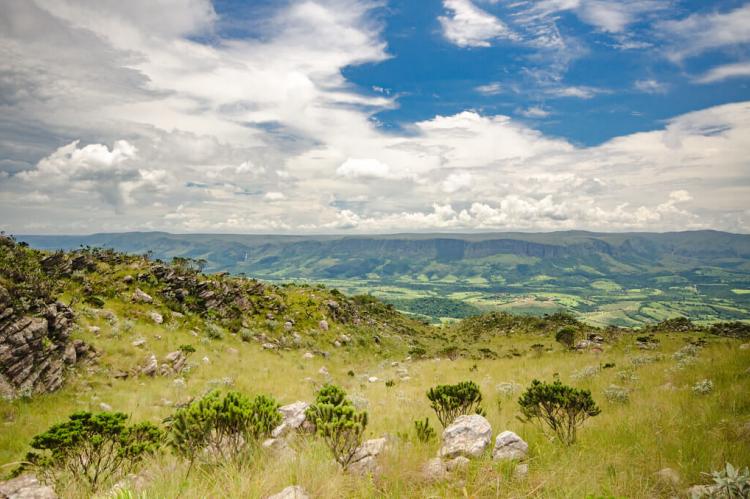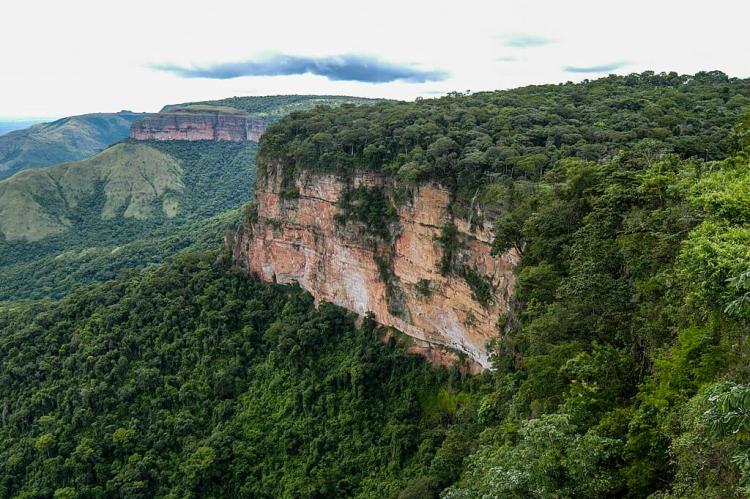Serra da Canastra: A Rich Blend of Natural Splendor and Biodiversity
The Serra da Canastra is a significant mountain range in southeastern Brazil. Nestled within the Brazilian Highlands, it is noted for its striking landscapes, rich biodiversity, and economic resources. The range is also the birthplace of the São Francisco River, one of Brazil's most essential watercourses.
Biodiversity and Beauty: Exploring the Serra da Canastra
The Serra da Canastra is a significant mountain range in the western part of Minas Gerais state in southeastern Brazil. Nestled within the Brazilian Highlands, it is noted for its striking landscapes, rich biodiversity, and economic resources. The range's unique geological features and ecosystems make it an area of natural beauty and scientific interest. The Serra da Canastra is also the birthplace of the São Francisco River, one of Brazil's most important watercourses.
Geographical Overview
Spanning approximately 240 km (150 mi), the Serra da Canastra extends from the Goiás state border in the north to the Grande River in the south. The mountains reach an average elevation of 1,800 m (6,000 ft), with specific peaks reaching even higher. The range forms the eastern boundary of the Triângulo Mineiro grassland region and is a key feature of the Brazilian Highlands. A federal highway runs along the eastern slopes of the Serra da Canastra, while another highway crosses the range east-west, facilitating access and transportation.
Geological Features and Mineral Resources
The Serra da Canastra is rich in mineral deposits, including calcium, lead, iron, thorium, zinc, and diamonds. These resources contribute to the region's economic importance. The mountain range's geological structure is also noteworthy. It is characterized by a variety of rock formations and deposits that have attracted geological studies and mining activities over the years.
Serra da Canastra National Park
Establishment and Area
Serra da Canastra National Park was established in 1972 to preserve the watershed of the São Francisco River and the surrounding ecosystems. The Park covers an area of approximately 197,810 ha (488,800 acres) and spans multiple municipalities, including São Roque de Minas, Sacramento, Capitólio, Vargem Bonita, São João Batista do Glória, and Delfinópolis. The Park serves as a vital conservation area, protecting the headwaters of the São Francisco River, which is essential for the region's water supply and biodiversity.
Hydrology and Topography
The Serra da Canastra National Park is located on the watershed that divides the São Francisco and Paraná river systems. The Park's diverse topography features steep cliffs and numerous waterfalls, including the notable Casca D'anta waterfall. This waterfall, which marks the São Francisco River's first significant drop, has a height of 186 m (610 ft) and is one of the Park's most iconic natural attractions. The Park's elevation ranges from 750 to 1,490 m (2,460 to 4,890 ft), contributing to its varied climate and habitats.
Climate
The Serra da Canastra region experiences a temperate climate with temperatures ranging from 1 to 29 °C (34 to 84 °F). The average temperature is around 18 °C (64 °F), making the area relatively mild throughout the year. Annual rainfall averages 1,250 mm (49 in), with most precipitation occurring during the wet season. The climate and rainfall patterns contribute to the lush vegetation and the diverse ecosystems within the National Park.
Flora and Fauna
Plant Life
The Serra da Canastra is home to a rich diversity of plant species, many of which are endemic to the region. The primary vegetation types include rocky fields and cerrado, with patches of riparian forest found along streams and valleys. The area's flora includes 45 endemic species, with notable genera such as Hololepis, Inulopsis, Aspilia, Senecio, and Sinningia. The Park's vegetation is well adapted to the climate and soil conditions, supporting various plant communities that provide habitats for numerous animal species.
Wildlife
The Serra da Canastra is a haven for wildlife, hosting a variety of mammal, bird, reptile, and amphibian species. Some of the prominent mammals include the maned wolf (Chrysocyon brachyurus), giant anteater (Myrmecophaga tridactyla), giant armadillo (Priodontes maximus), pampas deer, and various species of wild cats such as the cougar (Puma concolor), oncilla (Leopardus tigrinus), and ocelot (Leopardus pardalis). The Park is also known for its rich avifauna, including the Brazilian merganser (Mergus octosetaceus), greater rhea, and the crested caracara (Caracara plancus).
The Park's unique herpetofauna includes endemic species such as Hyla ibitiguara, Cinax canastrensis, and Odontophrynus sp. These reptiles and amphibians thrive in the diverse habitats of the Park's ecosystems, from wetland areas to rocky outcrops.
Conservation and Significance
Serra da Canastra National Park plays a crucial role in conserving Brazil's natural heritage. By protecting the headwaters of the São Francisco River and its surrounding ecosystems, the Park helps maintain ecological balance and supports the region's biodiversity. It also provides opportunities for scientific research, environmental education, and ecotourism, making it a valuable natural resource for both Brazil and the global community.
Conclusion
The Serra da Canastra, with its rugged landscapes, diverse ecosystems, and rich biodiversity, is a vital natural area within Brazil's southeastern region. Its status as a National Park underscores the importance of preserving its unique geological and ecological characteristics. As a source of the São Francisco River and a haven for numerous plant and animal species, the Serra da Canastra remains a crucial site for conservation efforts, offering insights into Brazil's mountainous regions' natural beauty and environmental significance.





